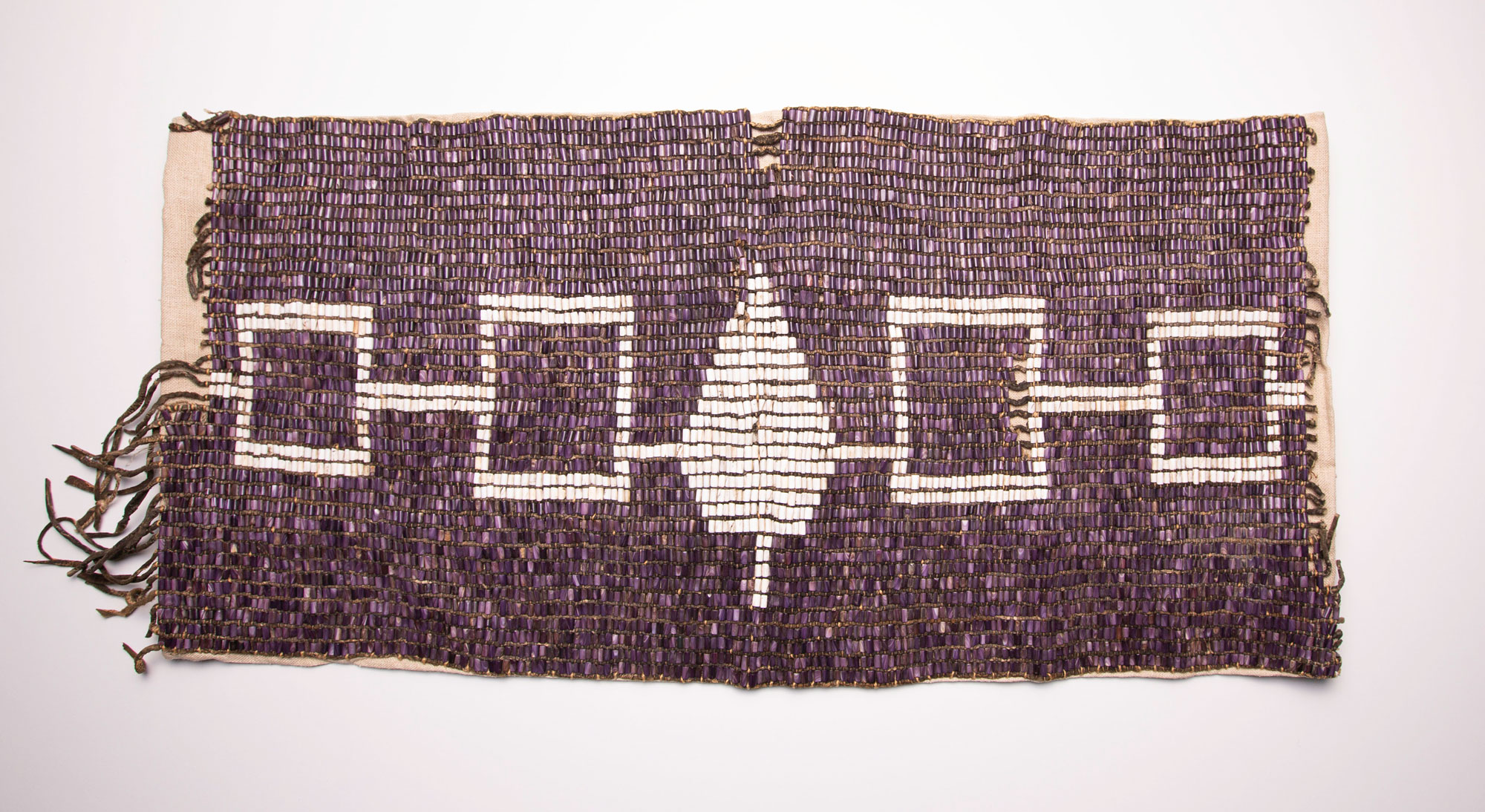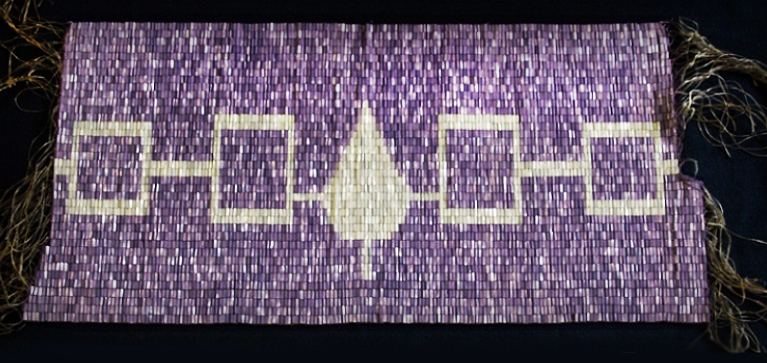
Beyond Beads and Barter: Unraveling the Profound Meaning of the Wampum Belt
For many, the mention of "wampum" conjures images of Indigenous peoples trading beads with European settlers, often misunderstood as a form of primitive currency. This simplistic view, however, barely scratches the surface of what the wampum belt truly represents. Far from mere trinkets or a rudimentary medium of exchange, wampum belts are intricate, living documents, repositories of history, law, spirituality, and diplomacy for the Indigenous nations of North America, particularly the Haudenosaunee (Iroquois) Confederacy and Algonquian peoples.
To truly understand the wampum belt is to step into a worldview where memory is woven, agreements are embodied, and the past speaks directly to the present and future. It is to acknowledge a sophisticated system of record-keeping and communication that predates European arrival and continues to hold profound significance today.

The Craft: More Than Just Shells
At its most fundamental level, a wampum belt is a tapestry of cylindrical beads, meticulously fashioned from the shells of marine mollusks. The two primary sources are the quahog clam, which yields the coveted purple or dark blue beads, and the whelk, providing the white beads. The process of creating these beads was arduous and time-consuming, involving grinding, polishing, and drilling with primitive tools. This inherent difficulty imbued each bead with value, not economic, but symbolic and spiritual.
The colors themselves carried deep meaning: white typically represented peace, purity, light, and good minds, while the darker purple or black beads symbolized serious matters, war, sorrow, or sometimes, the earth and creation. It was the arrangement of these contrasting colors, the patterns, and the pictorial representations within the belt that conveyed complex messages, historical events, and legal agreements. Human figures, trees, lines, and geometric shapes were not merely decorative; they were a codified language understood by those trained to "read" the belts.
Wampum as Diplomacy: The Living Treaty
Perhaps the most significant function of wampum belts was their role in diplomacy and treaty-making between Indigenous nations and later, with European powers. These belts were not merely symbolic gifts; they were the treaties themselves, tangible manifestations of spoken words and agreed-upon relationships. When a treaty was made, the wampum belt was meticulously crafted to reflect the terms of the agreement. During councils, the belt would be "read" aloud, its patterns serving as mnemonic devices, prompting the speaker to recite the full history, conditions, and spirit of the agreement.
One of the most iconic examples is the Two Row Wampum Belt, or Guswenta. This belt, typically featuring two parallel rows of purple beads on a white background, represents the enduring agreement between the Haudenosaunee and the Dutch, signed in 1613. The two purple rows symbolize two distinct vessels—a Native canoe and a European ship—traveling side-by-side down the river of life. The white background represents the river itself, as well as peace, friendship, and respect.
As articulated by Haudenosaunee oral tradition, the agreement stipulated: "We shall not interfere with the internal affairs of the other, nor shall we try to steer the other’s vessel. We shall travel parallel, respecting each other’s laws, cultures, and spiritual beliefs." This was not just a historical document; it was a foundational principle of mutual non-interference and coexistence that the Haudenosaunee continue to uphold as a living treaty, applicable to all subsequent relationships with colonizing powers.
Another pivotal example is the Hiawatha Belt, the national belt of the Haudenosaunee Confederacy. Composed of five figures connected by a continuous white line on a purple background, it visually represents the formation of the Great Law of Peace, uniting the five original nations (Mohawk, Oneida, Onondaga, Cayuga, and Seneca) into the Confederacy. The central figure represents the Onondaga Nation, the Keepers of the Central Fire, while the flanking squares symbolize the other nations, all linked by a common path of peace. It stands as a testament to political innovation and enduring unity.

The Covenant Chain wampum belts represent a series of alliances forged between the Haudenosaunee and the British from the mid-17th century. These belts often depicted two human figures holding hands, symbolizing the strong bond of friendship and mutual support. The chain itself was understood to need periodic polishing, signifying the need for ongoing maintenance of the relationship through renewed councils and diplomatic efforts.
Beyond Diplomacy: Law, History, and Identity
The utility of wampum extended far beyond inter-nation diplomacy. Within Indigenous communities, wampum belts served as:
- Legal Instruments: They formalized laws, judicial decisions, and the transfer of authority. A new chief might be "condoled" with a specific wampum belt, signifying his responsibilities and the history of his office.
- Historical Records: They chronicled significant events—wars, famines, migrations, and pivotal moments in a nation’s story. These belts were carefully preserved and "read" during annual ceremonies or whenever a reminder of the past was needed.
- Spiritual and Ceremonial Objects: Wampum was used in condolence ceremonies to "wipe the tears" of the bereaved, to cleanse the mind, and to restore balance. Its sacred nature ensured that agreements made with wampum were binding not only politically but spiritually.
- Identity Markers: Specific patterns and belts could identify a nation, clan, or even a particular family lineage, reinforcing communal bonds and individual roles within the society.
The care and interpretation of these belts fell to specially trained individuals, often called "Wampum Keepers." These individuals memorized the narratives associated with each belt, ensuring the accurate transmission of history and law from one generation to the next. The oral tradition was paramount, and the wampum belt served as its physical anchor, a living library of collective memory.
The Impact of Colonialism and the Fight for Repatriation
With the arrival of European colonists, the understanding and use of wampum began to shift dramatically. Europeans, accustomed to metal coinage, often misunderstood wampum as a primitive form of currency, leading to its misuse and devaluation. They mass-produced crude wampum for trade, divorcing it from its traditional cultural and spiritual significance.
More tragically, as colonial powers sought to dismantle Indigenous sovereignty, many wampum belts were seized, stolen, or "acquired" under duress. They ended up in museums, private collections, and universities, far removed from the communities they belonged to. This dispossession was a deliberate act of cultural genocide, severing the link between Indigenous peoples and their historical, legal, and spiritual heritage. Without their belts, communities struggled to maintain their oral traditions, their laws, and their very identity.
However, in recent decades, there has been a powerful movement among Indigenous nations to reclaim their wampum belts through repatriation efforts. Institutions like the New York State Museum and the Museum of the American Indian have begun returning belts to the Haudenosaunee Confederacy and other nations. These repatriations are not merely the return of artifacts; they are the restoration of living documents, bringing back a vital piece of cultural memory and strengthening Indigenous sovereignty.
When a wampum belt returns home, it is often met with ceremony and deep emotion. It signifies the healing of historical wounds, the reconnection of generations, and the revitalization of ancient knowledge. These belts are immediately put back to work, used in councils, educational programs, and ceremonies, fulfilling their original purpose as dynamic instruments of governance and cultural continuity.
A Living Legacy
The wampum belt is far more than a historical curiosity. It is a testament to the sophisticated political, legal, and spiritual systems of Indigenous peoples. It challenges the colonial narrative that often portrayed Native societies as primitive or lacking formal structures. Instead, wampum reveals complex diplomatic protocols, enduring laws, and a profound respect for the spoken word, embodied in meticulously crafted shell beads.
Today, as Indigenous nations continue to assert their rights and sovereignty, the wampum belt remains a powerful symbol. It serves as a reminder of unbroken treaties, a guide for contemporary nation-to-nation relationships, and a source of strength and identity for future generations. Understanding the true meaning of the wampum belt is not just an academic exercise; it is an essential step towards recognizing and respecting the rich, living heritage of the Indigenous peoples of North America. It is a lesson in listening to the past, understanding the present, and building a more equitable future based on the principles of peace, friendship, and mutual respect that these remarkable belts have always embodied.


